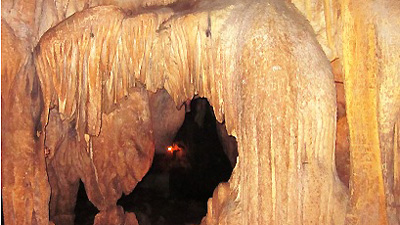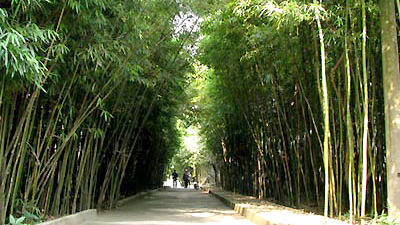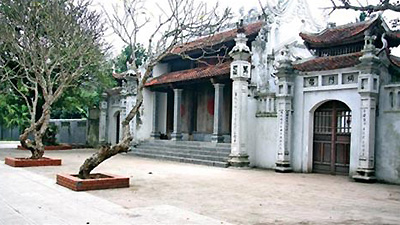About 70km from Hanoi, the Forbidden Mountain is known as a holy area with five beautiful caves in Thi Son commune, Kim Bang district. It has been recognized as a national historical and cultural relic site.

The mountain, also named Cuon Son or Quyen Son, is home to a special type of medicinal herb often used by local people.
The lion-shaped mountain includes an ancient temple that is covered by a lively green forest of bamboo. On the top of the mountain there is a nature-created chess table where visitors can play chess and have a panoramic view of the beautiful scenery.
Legend has it that in the 11th century General Ly Thuong Kiet commanded a naval fleet to fight the Chinese invaders on the Day River. When the troops were near the mountain, suddenly a hard wind blew the regiment’s signal flag to the mountain’s peak. General Kiet took this as a sign and led the troops to the mountain, burnt incense, and prayed for victory.
After winning the battle, he banned people from encroaching on the mountain, which he considered as a holy area. Since then, the mountain has been called Nui Cam (Forbidden Mountain).
Local villagers then set up a temple on the mountainside to commemorate the victory and worship Ly Thuong Kiet.
For hundreds of years, the wooden temple has been restored many times, but its ancient architecture remains unchanged.
Apart from the ancient temple, the legendary mountain has five miraculous caves and visitors will enjoy seeing them which share a common entrance leading to a 400m-long cavern containing five rooms, split naturally by stalactites in different forms.
Not far from the mountain, there is a special pagoda called Ba Danh that is described as a holy land of the mother goddess. It sits peacefully on the bank of the Day River.
At first, Ba Danh pagoda was small in size. It was then renovated under the reign of Emperor Le Hy Tong in the 17th century and later named Ba Danh by local villagers who installed a statue of Buddha there.
Ba Danh means so quiet according to an old saying, but in fact the pagoda is frequented by pilgrims and tourists around the year.
After arriving in Phu Ly City by bus, you’ll just take a boat to the tourist attraction on the Day River in 15 minutes.

Bamboo trees leading to Truc temple

Ba Danh Pagoda

A bridge linking Forbidden Mountain to Ba Danh pagoda

Leave your comment on this story